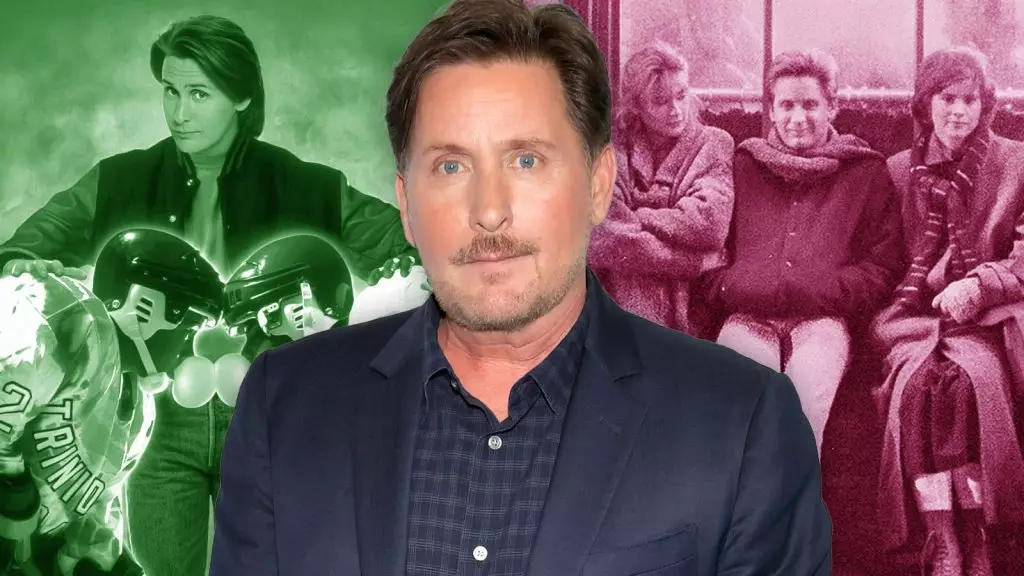Emilio Estevez, an actor beloved for his role as Coach Gordon Bombay in the iconic 1992 film *The Mighty Ducks*, recently peeled back the curtain on some of the challenges he’s faced in the entertainment industry. His recent interview with Josh Horowitz on the podcast *Happy Sad Confused* revealed his effort to breathe new life into a franchise that perhaps peaked too soon. Estevez’s aspirations for a sequel—Mighty Ducks 4—showcase his determination to craft a story that resonates with both legacy fans and newcomers alike. Yet, the hurdles he faced, including “contract disputes” and “creative differences,” speak volumes of the often grim and fragmented world of Hollywood.
It’s particularly striking that Estevez wants to shift the narrative towards inclusivity, presenting an all-girls team in his proposed sequel. By advocating for a professional women’s hockey league, he is not merely aiming for nostalgia but attempting to infuse modern sensibilities into a dated franchise. This desire for serious representation is commendable and reflects an important trend in today’s media landscape. However, the disheartening response from Disney, an industry giant resistant to such pivotal changes, paints a troubling picture of corporate inertia and an unwillingness to evolve. It begs the question: How often do creative ideas get suffocated by the very systems meant to celebrate them?
Lessons from the Set: Bullying and Growth
Estevez’s recounting of his time on the set of *St. Elmo’s Fire* serves as yet another facet of his journey, interlacing the joy of creation with the darker realities of a turbulent workplace. His anecdote about director Joel Schumacher reveals a harsh learning environment marked by volatile personalities and bullying. The contrast between Schumacher and John Hughes is stark; Estevez paints a picture of constructive creativity versus toxic leadership. It is troubling to consider how such dynamics not only affect the mental health of young actors but also skew the artistic output generated in high-pressure situations.
While Estevez’s vow to never treat actors as Schumacher did is a noble commitment, it underscores a critical point: the industry, even in its modernization efforts, still harbors practices that can be damaging. His reflection isn’t just a personal grievance; it raises important questions about leadership and mentorship in the arts. Is the current landscape doing enough to ensure that new generations of filmmakers and artists learn from past mistakes?
The Artist’s Journey: Eager Yet Candid
Estevez’s desire to succeed creatively, whether through an ambitious sequel or nurturing a compassionate work environment, resonates deeply. His candidness about failure and disappointment—both with corporate pushback and memory of abusive direction—not only makes him relatable but also reinforces the challenges artists face in a profit-driven environment. As he embraces being a storyteller willing to risk new narratives, one has to wonder if those within the industry are listening.
Ultimately, Emilio Estevez advocates for change, hoping to challenge the very structures that stifle creativity. In doing so, he reminds us that the battle for authenticity and inclusive storytelling is one worth fighting, even against significant odds.


Leave a Reply